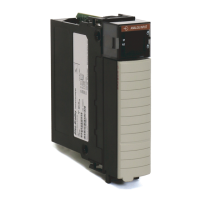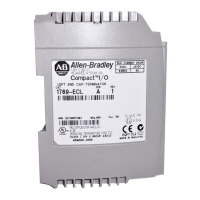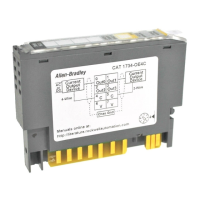Rockwell Automation Publication 1756-AT017A-EN-P - January 2013
Position-based Output Control with the MAOC Instruction 15
Applicator Control Example
In this applicator control example, glue applicators apply four lines of glue in
controlled patterns on moving web material.
Figure 14 - Applicator Control Example
Figure 15 shows the configuration of the output cam for this example:
• The configuration includes a short and long pulse for each glue applicator.
• The pulses use the Position and Enable parameter. This lets the
programmer disable the glue when running the system at very low speeds,
which creates excess glue production, or when running tests without any
product.
• The last two entries let the programmer set a purge cycle in which glue
continues to run without following the master axis. When the enable bits
are turned On, the glue heads continue to operate even if the axis is not
moving.
Axis Arm Position Set to 0.0 with the knowledge that the box is 0.5 m further on the conveyor belt.
Cam Arm Position Set to 0.0. This operand determines the position in the output cam at the
moment that the output cam is armed. In this application, no phase correction is
required.
Position Reference Set to Actual. The Conveyor_Feedback axis is a feedback-only axis, so the
position reference must be the actual position of the axis.
Table 4 - MAOC Operands for Strobe Trigger (continued)
Operand Configuration
Web Material
Glue Lines

